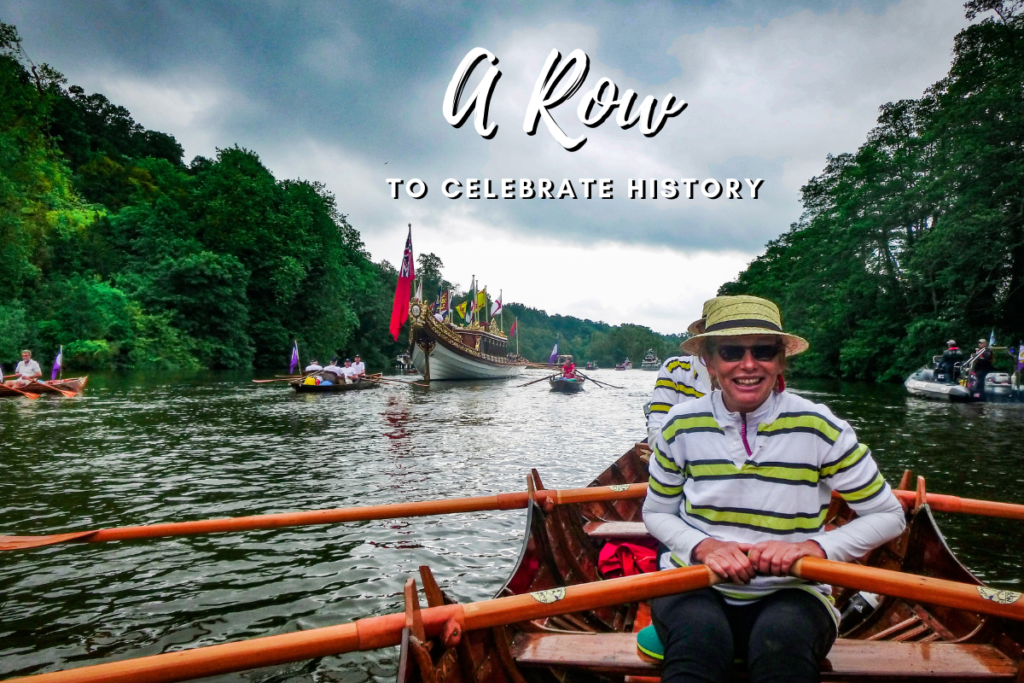
A Row to Celebrate History
In a relatively brief visit to any country, you cannot gain a great depth of insight into its history and culture. But every once in a while, history just envelopes you and you get immersed in something very cultural and very special. This is what happened to me when I rowed in the Magna Carta 800 Relay on 14 June 2015 on the River Thames in England.
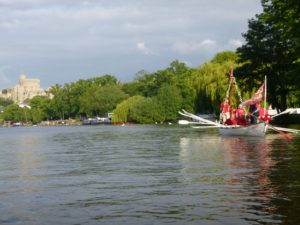
The Boys in the Boat and other historic Olympic rowing moments, or perhaps how rowing developed in your local club or country. But the Magna Carta 800 Relay and some other recent experiences rowing in England, made me aware of the role of rowing in history.
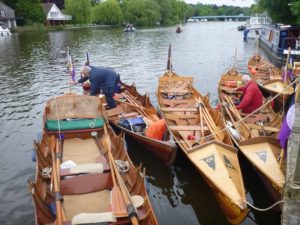
Hear The Boat Sing. There are some terrific images of rowing boats in the post, including of water jousting. Rowed boats (usually with fixed seats) have been used for fishing almost universally in a multitude of variations – some of my rowing trip destinations illustrate the diversity from traditional cots on the rivers of Ireland, whale boats in California, bokkura in the Maldives. I saw Cornish pilot gigs in the Magna Carta Relay, have been used as life-saving boats since the 17th century and have ferried pilots out to incoming vessels. Rowers were also warriors. I climbed into the seat of a trireme at The River and Rowing Museum at Henley-on-Thames. These fast and agile Greek warships were propelled by 170 rowers in three tiers and terrorized the Mediterranean until the 4th century BC. Let’s not forget the Vikings. The list goes on. In ways subtle and significant, rowing has been an important part of history.
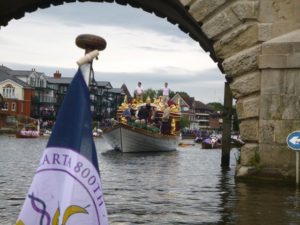
Queen’s Rowbarge “Gloriana”. Built for the Diamond Jubilee in 2012, it is a celebration of the tradition of British boatbuilding and craftsmanship, and is intended to especially encourage young people to engage with the River Thames and the sport of rowing. Rowing Gloriana is a great honour and crowds lined the banks of the river that Saturday to applaud her passage.
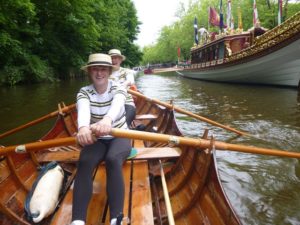
Thames skiff which was about 100 years old – another layer of historical connection. Wikipedia explains that “Thames skiffs were developed in the 19th century primarily for leisure use by private individuals sculling themselves. The design was based on the Thames wherries and shallops that were operated by watermen as a water taxi service in London.” Ah, think of all the historic moments that included transport across the Thames by rowed boat. Check out the description of watermen, offering loads of history. Apparently in 1628 there were 2,453 watermen working the Thames, while in 2006 only about 600 remained.
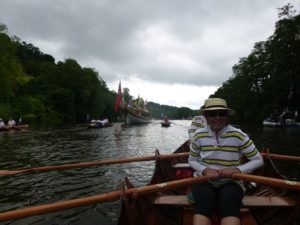
Wonderful article.
Thank you Dino. I definitely was very fortunate.